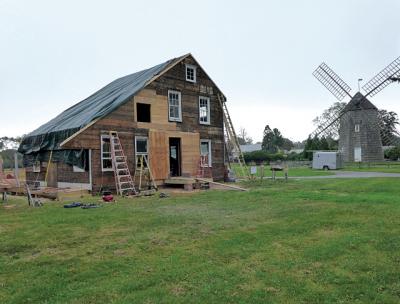Springs Man Injured in Farmingville Humvee Accident
Springs Man Injured in Farmingville Humvee Accident
A Springs man was among those injured in an accident involving a United States Army Reserve Humvee at a festival in Farmingville on Saturday. The Humvee was on display, parked on an incline, and unoccupied when it rolled into a crowd of people.
Suffolk County Police Sixth Squad detectives are investigating what caused the accident at the Long Island Bacon Bash at the Pennysaver Amphitheater at about 5:10 p.m. The Humvee somehow slipped out of gear and rolled approximately 30 feet and struck a woman. Suzette Lamonica, 46, of Brookhaven was pinned between the vehicle and a food trailer. She was taken to Stony Brook University Hospital, where she was admitted for treatment of what police said were serious leg and arm injuries.
The Springs man, Richard Gherardi, was inside the food trailer. The 30-year-old was burned by cooking oil, police said. He was also taken to Stony Brook for treatment, but police did not release the extent of his injuries.
Two women experienced minor injuries and refused medical attention at the scene, according to police.
The Humvee was impounded for a safety check. Detectives are asking anyone with information about this incident to call the Sixth Squad at 631-854-8652.






